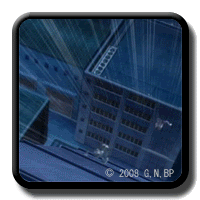ASCII Table and Description
ASCII stands for American Standard Code for Information Interchange. Computers can only understand numbers, so an ASCII code is the numerical representation of a character such as 'a' or '@' or an action of some sort. ASCII was developed a long time ago and now the non-printing characters are rarely used for their original purpose. Below is the ASCII character table and this includes descriptions of the first 32 non-printing characters. ASCII was actually designed for use with teletypes and so the descriptions are somewhat obscure. If someone says they want your CV however in ASCII format, all this means is they want 'plain' text with no formatting such as tabs, bold or underscoring - the raw format that any computer can understand. This is usually so they can easily import the file into their own applications without issues. Notepad.exe creates ASCII text, or in MS Word you can save a file as 'text only'.
Uni Code
 Fundamentally, computers just deal with numbers. They store letters and other characters by assigning a number for each one. Before Unicode was invented, there were hundreds of different encoding systems for assigning these numbers. No single encoding could contain enough characters: for example, the European Union alone requires several different encodings to cover all its languages. Even for a single language like English no single encoding was adequate for all the letters, punctuation, and technical symbols in common use.
Fundamentally, computers just deal with numbers. They store letters and other characters by assigning a number for each one. Before Unicode was invented, there were hundreds of different encoding systems for assigning these numbers. No single encoding could contain enough characters: for example, the European Union alone requires several different encodings to cover all its languages. Even for a single language like English no single encoding was adequate for all the letters, punctuation, and technical symbols in common use.
These encoding systems also conflict with one another. That is, two encodings can use the same number for two different characters, or use different numbers for the same character. Any given computer (especially servers) needs to support many different encodings; yet whenever data is passed between different encodings or platforms, that data always runs the risk of corruption.
References
2. UNICODE.org http://www.unicode.org/
3. IBM (DOS) Extended ASCII Character Set http://telecom.tbi.net/asc-ibm.html
4. ASCII: A Brief Introduction http://www.bellevuelinux.org/ascii.html
6. The debut of ASCII, by Mary Brandel http://edition.cnn.com/TECH/computing/9907/06/1963.idg/index.html
10. ASCII Code, by Erik Ostergaard http://www.erikoest.dk/ascii0.htm
11. HTML ASCII http://www.efn.org/~gjb/asciidec.html
12. Extended ASCII chart http://www.cdrummond.qc.ca/cegep/informat/Professeurs/Alain/files/ascii.htm
13. Unicode Tutorial http://www.hwacha.net/unicode
14. The Multilingual Web, by Gabe Bokor http://accurapid.com/journal/10intlweb.htm
16. C++ Documentation ASCII Code http://www.cplusplus.com/doc/ascii.html
17. ASCII Table 7-bit http://www.neurophys.wisc.edu/comp/docs/ascii/


0 comments:
Post a Comment